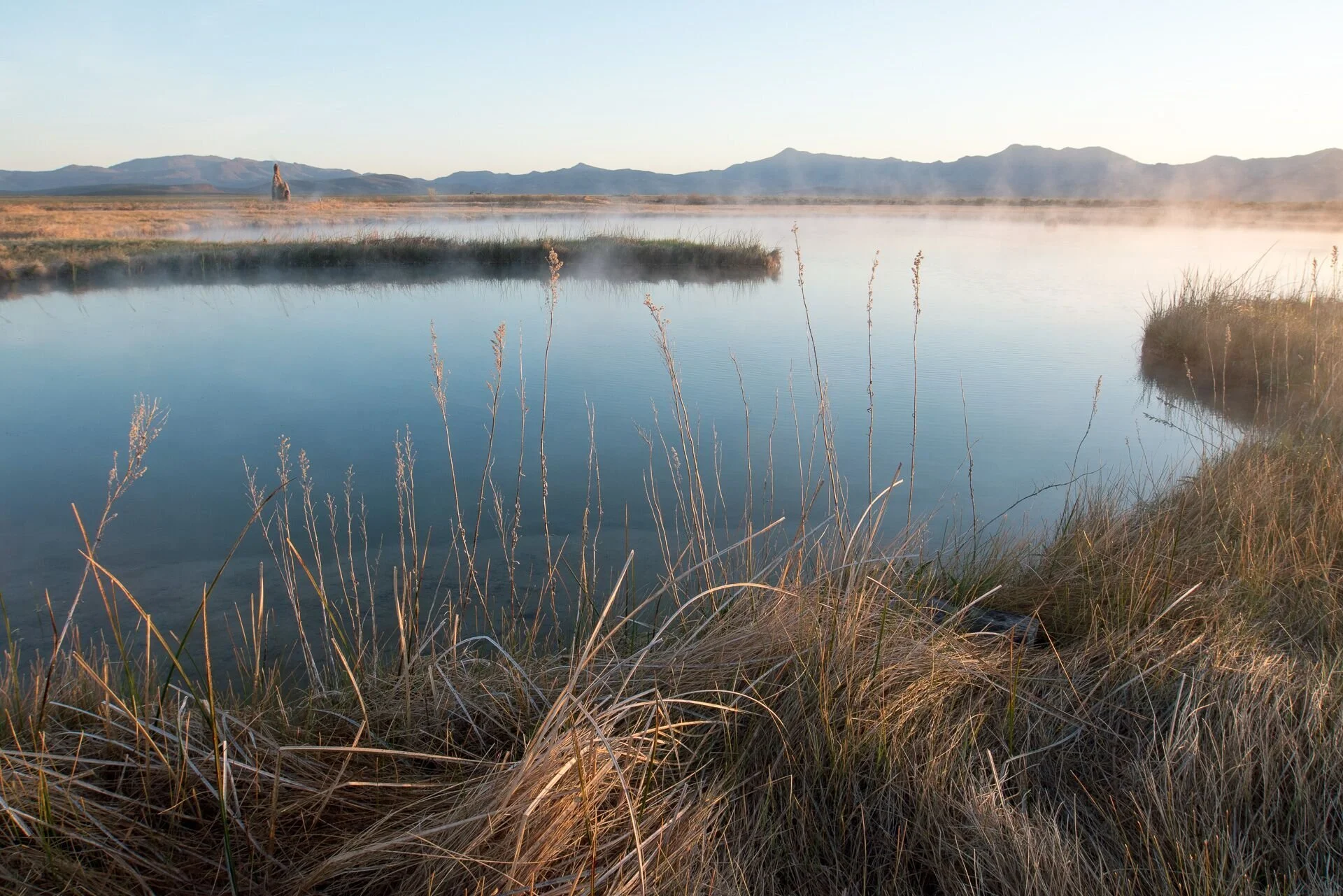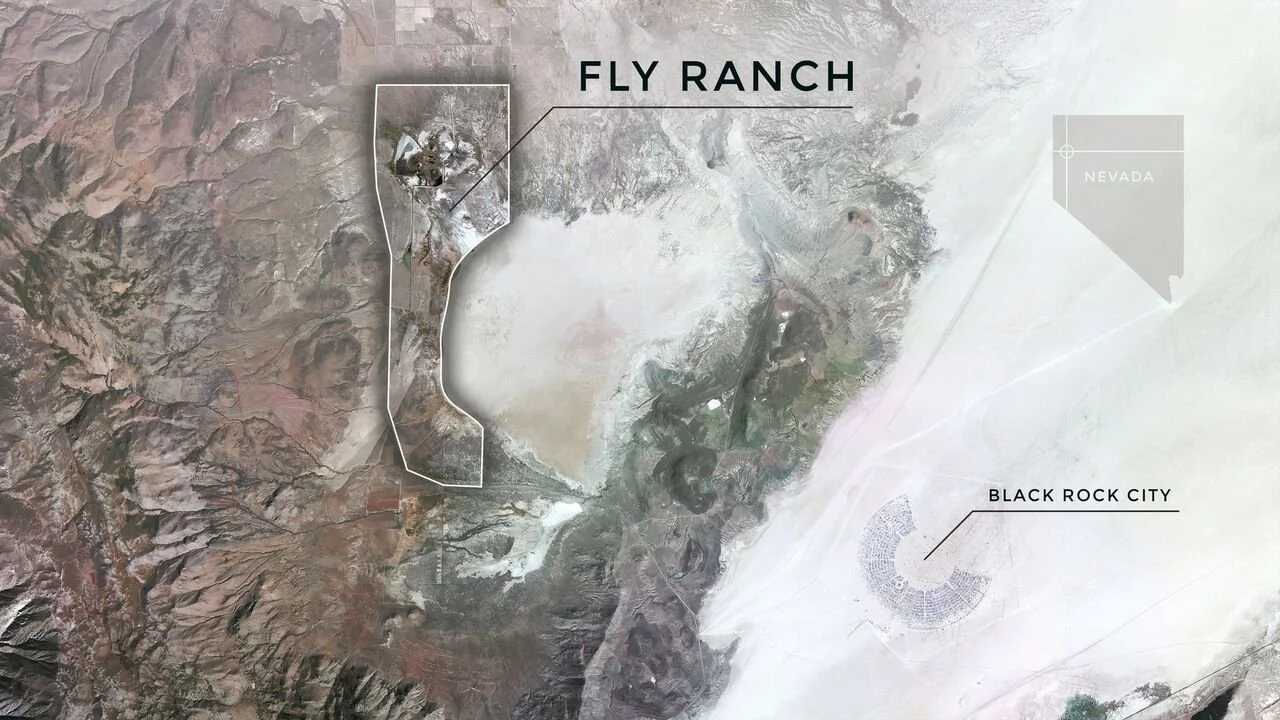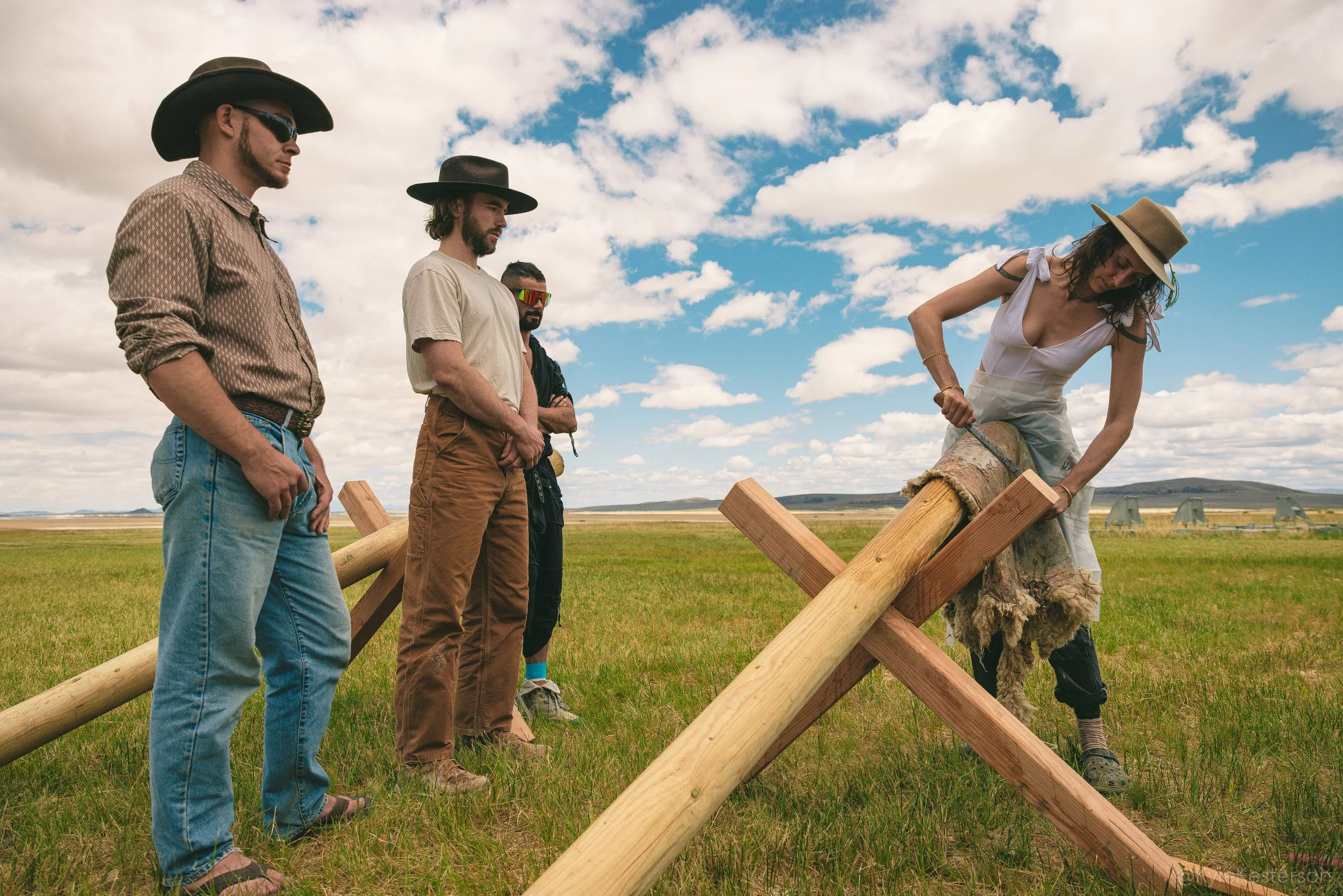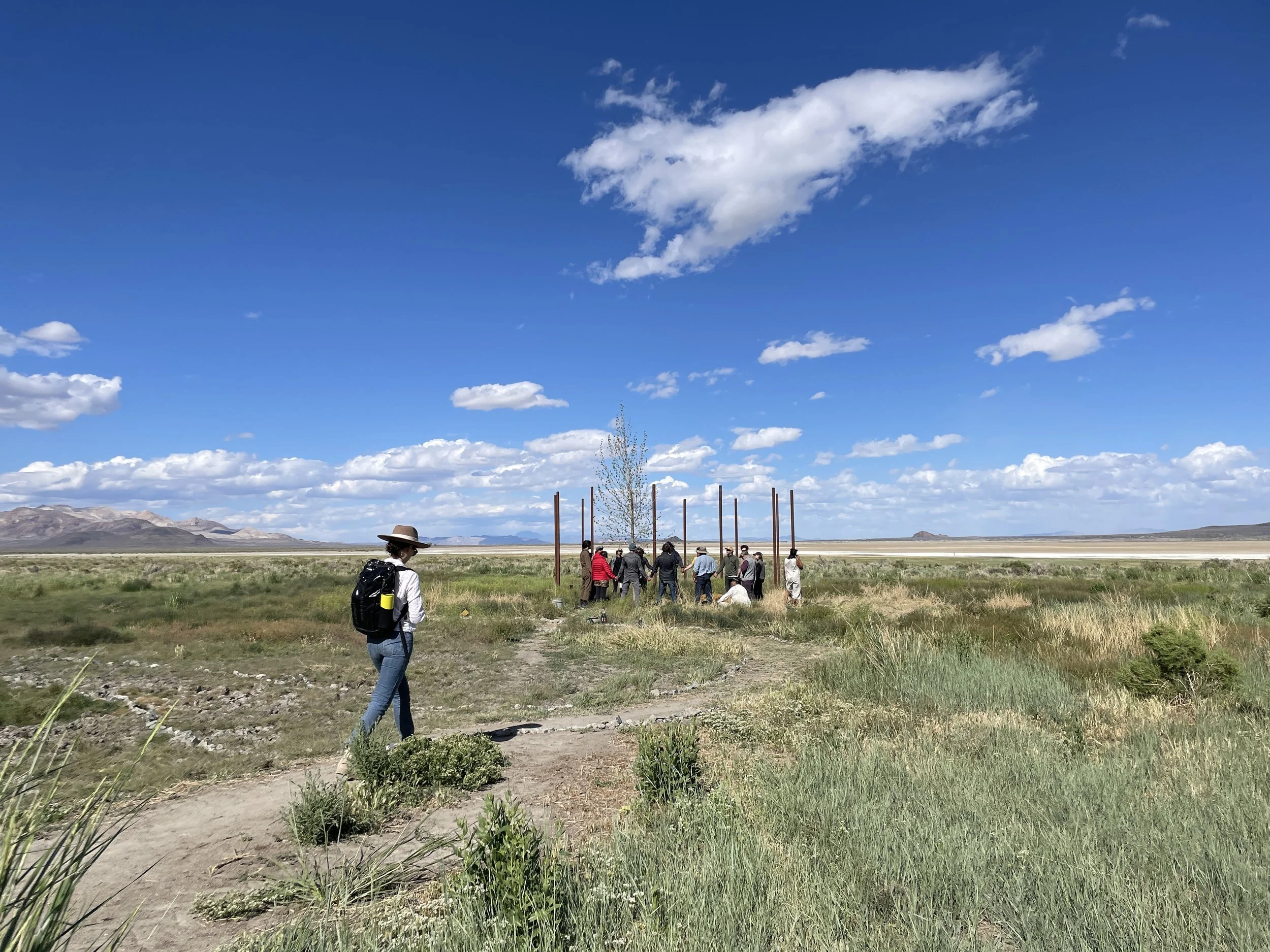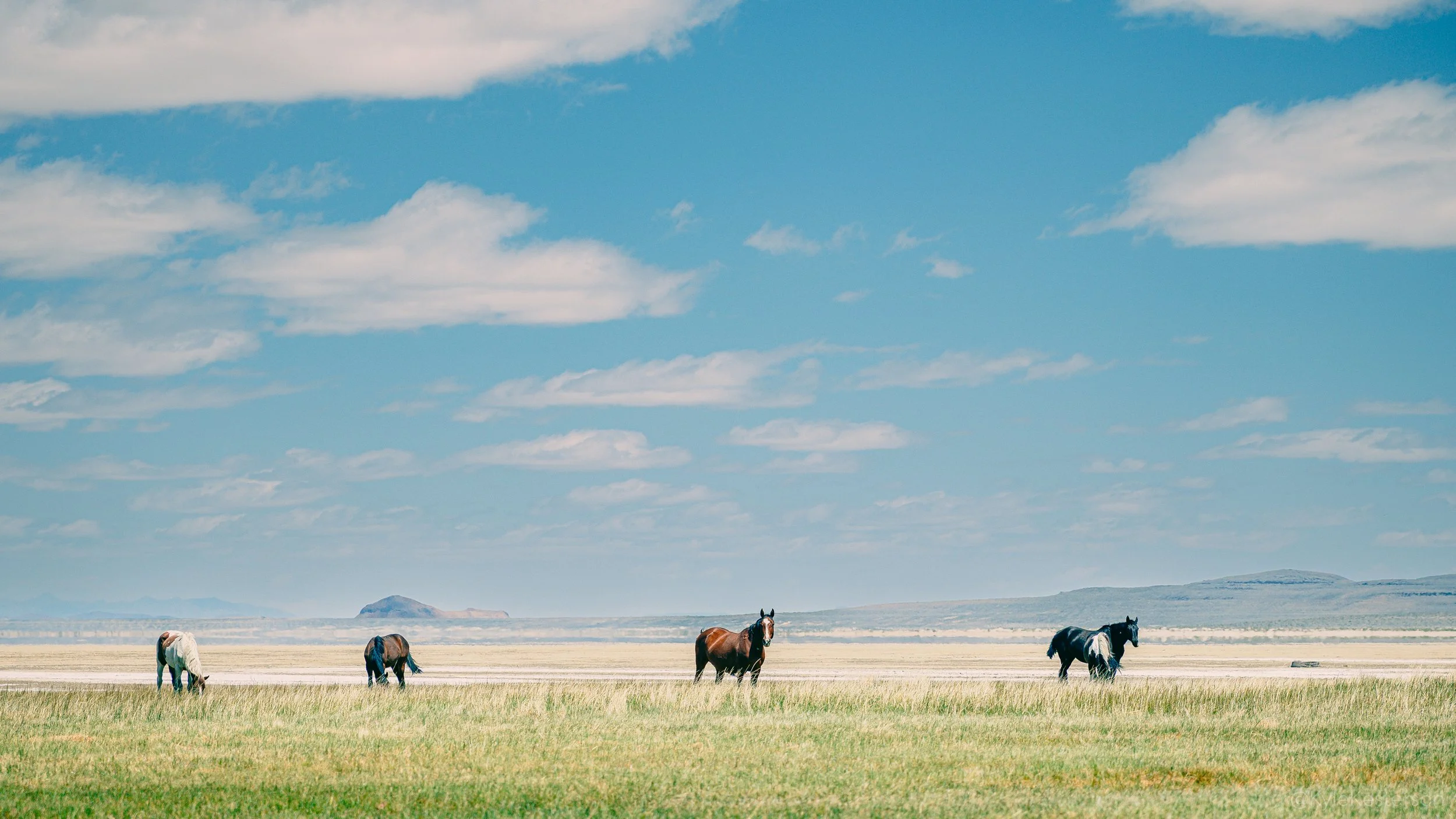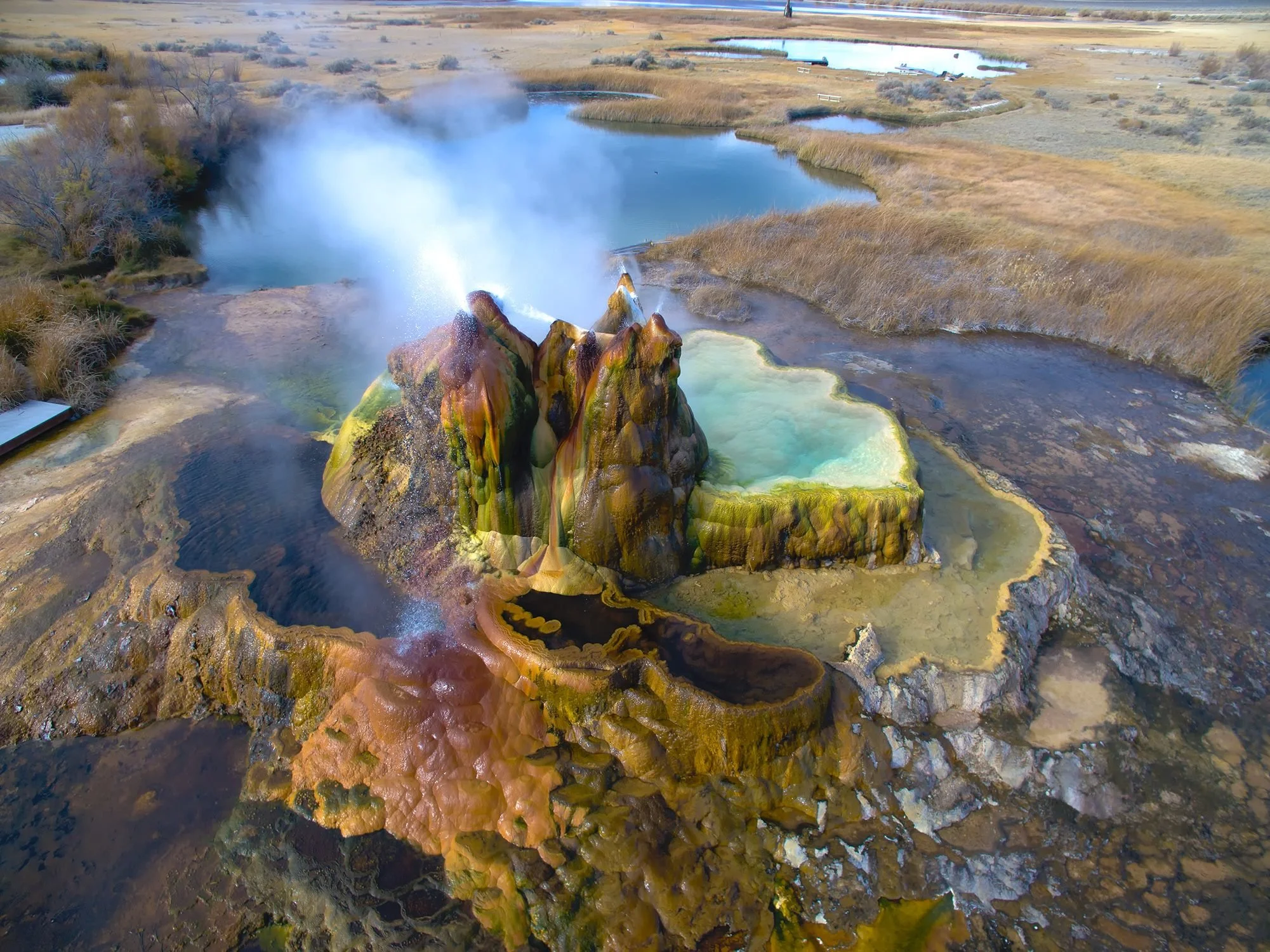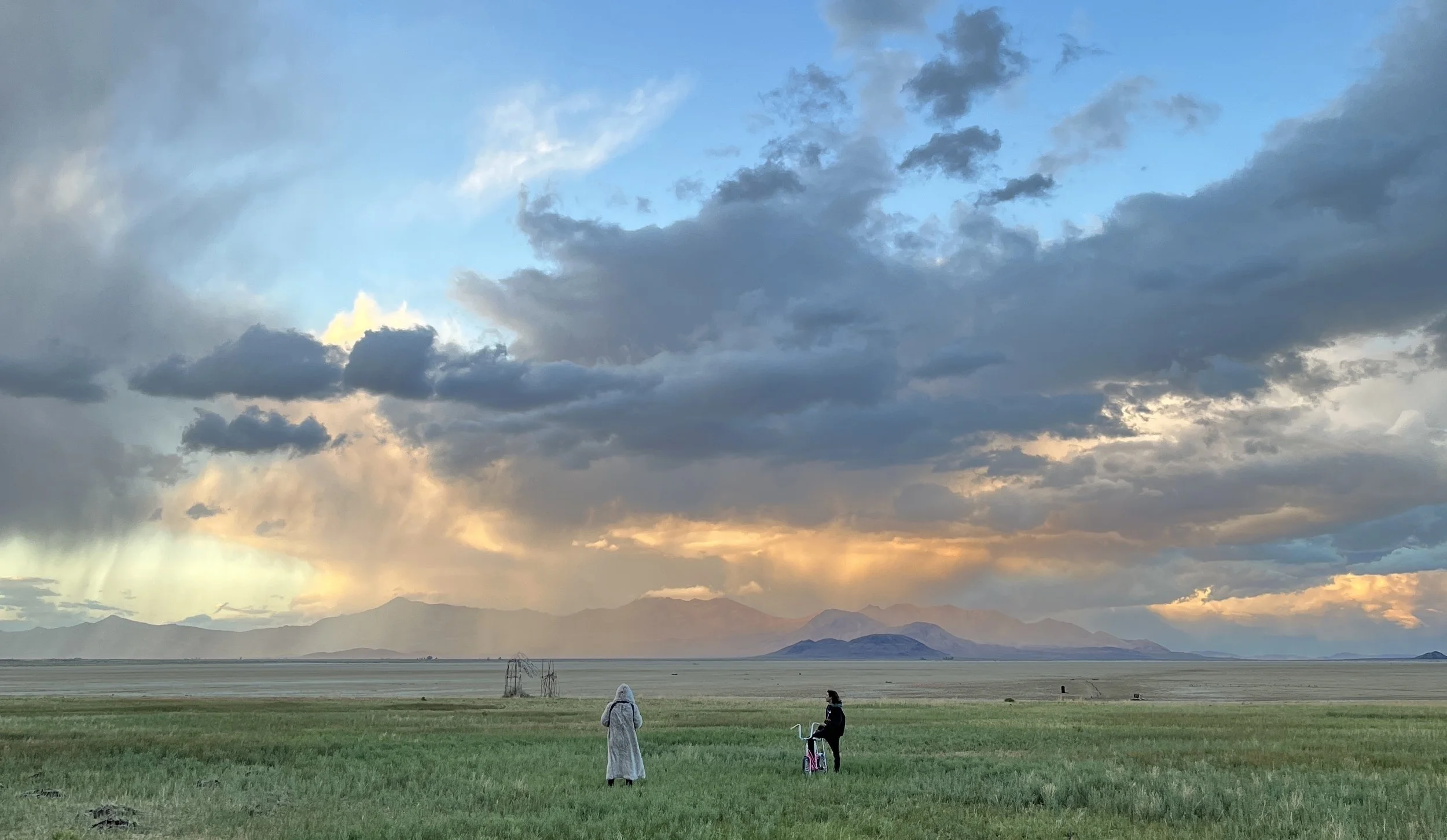Fly Ranch Hot Springs: Interview With Operations Manager Zac Cirivello
@Zac Cirivello
Many of Nevada’s hot springs are tucked away in remote locations. Be prepared for unpaved roads, minimal amenities, and a chance encounter with desert wildlife like bighorn sheep or wild horses.
Please be mindful of noise levels and avoid disturbing the natural environment. Leave no trace and pack out all trash.
We have previously share tips for enjoying some of Nevada’s best hot springs. And in doing this we came across Fly Ranch. We found out Fly Ranch is an integral part of the Burning Man ecosystem, with a focus ona connection to community, culture, and ecology.
We wanted to learn more, don’t you? So we interviewed Operations Manager Zac Cirivello.
Interview with Zac Cirivello
@Megan Miller
1. Tell us more about your vision for Fly Ranch? What do you see it becoming in the future? What role does it play in the Burning Man ecosystem?
Fly Ranch is a 3,560 acre ranch in the high desert with 150 hot and cold springs, geysers, and a few hundred acres of wetlands. It is about 8 miles from where the Burning Man event happens in the Black Rock Desert. In 2016, with the generosity of a dozen founding donors, Burning Man Project purchased Fly Ranch to create a permanent, year-round Burning Man rural center for interactive art, ecological restoration, and community participation.
Since then we have walked, worked, and studied the land. Since 2021, 50 - 400 people a week have visited for 32 weeks. Much of our work has been restoration, as we have excavated landfills, restored junkyards, and found new uses for relics from when Fly was an airport, ranch, and farm.
Our long-term vision is to cultivate a living laboratory for Burning Man culture, where sustainability, creativity, and community stewardship intersect.
We see Fly becoming a place of ongoing, year-round experimentation. Not just in art, but in food systems, architecture, governance, and shared values. It’s not a finished product or a conventional destination. Over time, we imagine Fly supporting:
Experimental infrastructures — composting systems, solar grids, regenerative shelters, mycelium insulation, greywater wetlands, etc.
Residencies and retreats for artists, scientists, healers, educators, and dreamers.
Pilgrimages and walkabouts — slow, ceremonial engagement with the land and its cycles.
Seasonal gatherings that feel more like offerings than events.
@Kyle Kesterson
In the Burning Man ecosystem, Fly Ranch is Burning Man’s deep soil. If Black Rock City is the bloom, the annual burst of radical expression, Fly is where the roots grow. It’s a quieter place to metabolize our principles and test new ideas outside the time constraints of the event cycle.
It allows us to move from “Leave No Trace” to “Leave Better Than You Found It.” From building temporary cities to imagining permanent possibilities.
A quote from Burning Man Founder Larry Harvey conveys this vision:
Let’s create something. I believe it can be done. I mean, it’s a great city, Black Rock City, but if you hang around the city and never leave it, you’ll get bored. It’s the same old city. I want it to mean more, to be a greater thing, greater and more meaningful because in that greater form it’s affecting the lives of millions. There are things out there that need to be changed. I want to create that real change, not just have Burning Man be a celebratory event.
We do not intend to use these sites as a refuge or retreat from the world. Instead, it is our aim to treat these places as a platform from which to project our culture outward. We believe this platform can be made to function as a chambered heart, continually pumping new vitality into the body of a worldwide community. This vision is not based on the findings of consumer focus groups or the result demographic projections – it is an act of faith deriving from our deeply felt experience of Burning Man. People often approach me in the desert, asking if I ever thought that our event would grow to be so large. Lately I have learned to look about, taking in everything around me, and say I think this is a good start. Anyone at any time can be a founder, and we invite you to join us.
Larry Harvey, “Giving to Fly Ranch: An Open Letter to Our Community", 2017.
To learn more, visit our website: https://flyranch.burningman.org/about
2. I see you talk about public benefits on your web page. Can you break these down a bit?
@Zac Cirivello
Fly Ranch provides a wide range of public benefits rooted in ecology, creativity, and community. We protect natural beauty while offering public access to geothermal springs, wildlife, and open landscapes. Visitors can hike, soak, and participate in hands-on projects that support well-being, education, and stewardship. Fly strengthens the local economy by bringing people to Gerlach and supporting regional sustainability efforts. We host art, science, and cultural programs that blend large-scale creativity with land restoration and conservation. Through partnerships with Tribal leaders, researchers, and land stewards, Fly fosters global exchange, regenerative practices, and deeper connection to the Earth.
Black Rock City has been cited in academic studies for its benefits and structural novelty. A majority of respondents of the Black Rock City Census state that they have had a “transformative experience” during the event. Fly Ranch has many of the same benefits as Black Rock City, and others. The Nevada economic development plan has a summary of public benefit:
“Boost Nevada’s international representation and relationships”
“Catalyze innovation in core and emerging industries”
“Increase opportunity through education and workforce development”
The Bureau of Land Management (BLM) has useful, longer guidelines on public benefit (see page 136). Thus this document assesses the BLM’s guidelines and shows how Burning Man Project and Fly Ranch create public benefit. We work with the BLM and neighbor on BLM land. As a proxy, the BLM guidelines make sense.
Fly Ranch is home to geysers, animals, wildlife, 150 pools, 800 acres of marsh, and other delicate ecosystems that over 2,000 people visited in 2018.
Building community
A study in Qualitative Sociology found that storytelling at Burning Man “can combat disenchantment by promoting consideration of agency and meaning-making.”
Research in Consumer Behavior found “nomadic spirituality among the citizens of Black Rock City, Nevada.” Fly Ranch has hosted storytelling events.
Nurturing growth
Basic and Applied Social Psychology has found positive benefits at Black Rock City: “Compared to typical emotion regulation use at home, at Burning Man participants reported decreased suppression use and increased reappraisal use.”
Fly Ranch recreates these benefits in our programming.
Natural resource stewardship
Black Rock Solar is a Burning Man affiliate, now known as Black Rock Labs. They put in 112 solar installations around Nevada, creating 7.4 MW of renewable energy, 13 million kWh per year, generating around $1M in annual electricity purchase savings.
This has led to around 6.5K tons of CO2 reductions per year, taking around 2,100 homes off-grid. Fly Ranch uses solar power, and plans to continue in this direction by installing wind, solar, geothermal, agricultural, and water projects.
@Kyle Kesterson
Self-reliance
Burning Man allows consumers to escape the market with “communal practices that distance consumption from broader rhetorics of efficiency and rationality.”
“Although Burning Man's participants materially support the market, they successfully construct a temporary hypercommunity from which to practice divergent social logics.” Fly Ranch hosts gatherings based on these same components.
Artistic expression
Burning Man creates “beliefs and practices that promote artistic prosumption” (art produced by consumers) and “an inclusive community logic.” Fly Ranch is host to multiple art pieces created by the community.
Environmental education
Fly Ranch treats wastewater, compost, and uses composting toilets. These projects serve as functional, reproducible projects with educational benefits.
Leadership development
Burning Man’s medical team treats thousands of people every year, and published research: “Our experience with Burning Man 2011 may aid planners with similar events.”
Marines have attended and studied Burning Man for logistics leadership development.
Fly Ranch has produced collaborative open-source documentation that is relied on by other land management projects.
2a. How does connection to nature and stewardship fit into your springs? What are some specifics you are doing there that people might want to replicate?
At Fly Ranch, the hot springs aren’t just a place to soak—they’re a space to reconnect with the land, reflect on our impact, and practice stewardship in real time. Connection to nature here means slowing down, paying attention, and engaging with the ecosystem as a participant, not just a visitor.
We go beyond “leave no trace” by actively regenerating the area through native plant restoration, erosion control, and community cleanups. Our trails, benches, and access paths are built with reclaimed materials and minimal impact. Our seasonal closures help protect fragile ecosystems and prevent overuse, especially during wet or sensitive periods.
These choices model a replicable ethic: that soaking in hot water can be more than self-care—it can be a way to practice care for the Earth. Visitors often leave inspired to create low-impact spaces, rethink access, and build with nature in mind, not in spite of it.
2b. Can you tell me about the mineral content and potential health benefits?
Our hot springs contain a unique blend of naturally occurring minerals that may support relaxation and well-being. Magnesium and lithium are known to ease muscle tension, support nerve function, and promote relaxation and mood. Sodium helps hydrate the skin and may support detoxification through mild sweating. Calcium supports healthy bones and may soothe skin irritation. Potassium is an essential electrolyte that can help balance hydration and support muscle function.
3. Inclusion and accessibility are important to our readers. How do you support these factors at your springs?
Radical inclusion is a core principle of Burning Man and we model that at Fly Ranch. We believe that everyone deserves access to nature, healing, and community—regardless of background, ability, or financial means. We offer free and sliding-scale access through nature walks, volunteer programs, and community events, ensuring that cost is not a barrier to participation.
The springs are intentionally quiet, low-sensory spaces, making them welcoming for people who are neurodivergent or sensitive to overstimulation. While the site remains rustic and off-grid, we’re continuously improving trails and facilities to broaden physical accessibility over time.
At the heart of it all is a culture of respect and consent—visitors are encouraged to show up as they are and share in a space where radical inclusion is more than a value; it’s a practice. The springs offer not just renewal, but a model for what shared, inclusive stewardship of nature can look like.
4. Hot springs are traditionally very much part of local culture, and many myths include hot springs. How do you work with the local community at each of your springs?
@Matt Lagomarsino
Hot springs have long been sacred gathering places, sources of healing, and storytelling sites for Indigenous peoples, including the Numu (Northern Paiute) and Newe (Western Shoshone) communities whose ancestral lands include Fly Ranch. We approach our relationship to the springs with humility, recognizing that they are not just geological features—they are part of a much older cultural landscape.
Our connection with the local Indigenous community is grounded in respect and ongoing collaboration. In 2022, we hosted a ceremonial blessing and tule reed harvest led by members of the Pyramid Lake Paiute Tribe. Tule has been used for generations in basketry, shelter, and ceremony, and this gathering honored traditional knowledge while creating space for cultural practices to continue on the land today. It wasn’t a performance or reenactment—it was a living relationship, and we were grateful to be in a listening and supportive role.
We also begin every gathering at Fly with a land acknowledgment, recognizing that the land we steward is the traditional territory of the Numu and Newe peoples. This is not just a statement—it’s a commitment to building relationships rooted in reciprocity, respect, and repair.
Rather than treating hot springs as amenities, we see them as cultural waters—connected to memory, myth, and meaning. Our goal is to care for them in ways that honor their past and make space for diverse communities to connect with them today.

